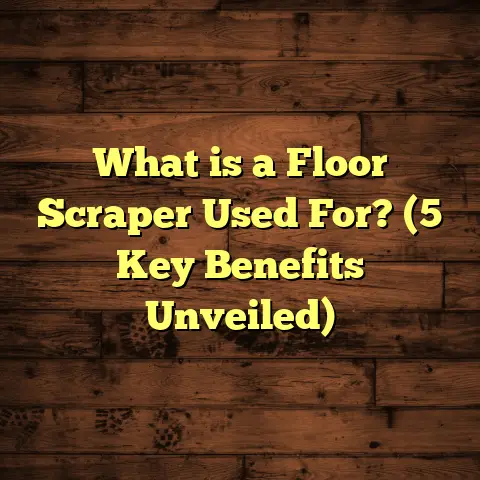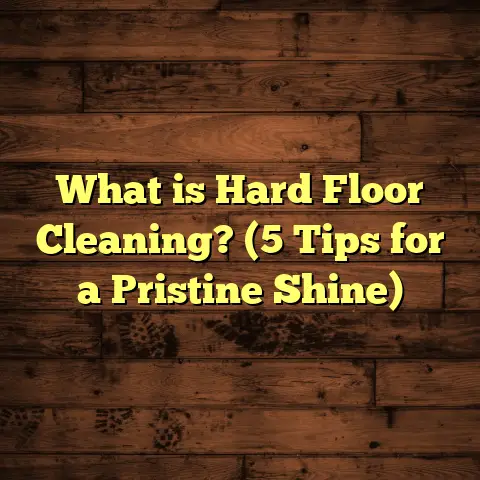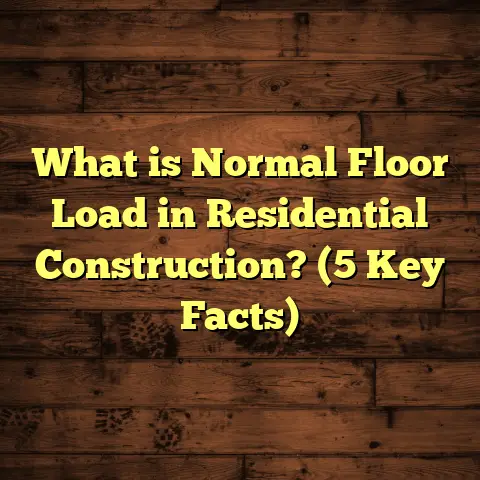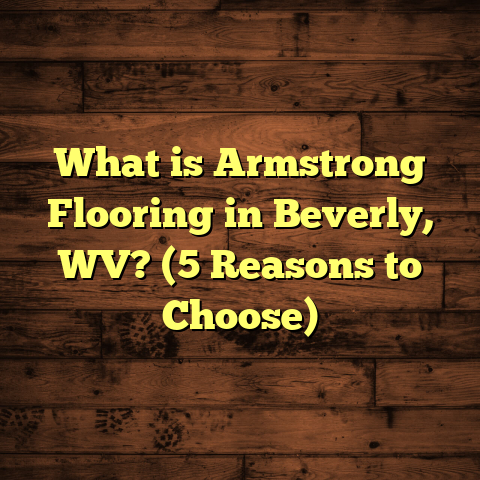What is Glass Board Flooring? (5 Benefits You Didn’t Know)
Have you ever stood in the middle of a flooring store or scrolled through endless online options and thought, “Is there something out there that’s durable, stylish, and unique—but also practical?” I’ve been there more times than I care to count. Over the years, I’ve installed nearly every type of flooring you can imagine—hardwood, laminate, vinyl, tile, carpet—you name it. And then I stumbled upon something quite unexpected: glass board flooring. At first, I thought it was just a novelty. But after trying it out on multiple projects and my own home, I realized it’s far from just a cool idea. It’s a game changer.
Let me walk you through exactly what glass board flooring is, compare it to other materials I’ve worked with, share some behind-the-scenes experiences, and reveal five benefits you probably haven’t heard about before.
What is Glass Board Flooring?
Glass board flooring consists of panels made from specially engineered glass or glass composites designed to be used as floor surfaces. Unlike fragile household glassware or windowpanes, these boards are made with reinforced tempered glass combined with layers of resin or other bonding agents to boost strength and flexibility.
Think of it as a super-tough sandwich where glass layers are bonded tightly with resin that absorbs shocks and prevents cracking. The surface is often coated with a textured finish to improve grip and prevent slipping.
Types of Glass Board Flooring
There are several variations of glass board flooring available depending on how the panels are manufactured and finished:
- Tempered Glass Boards: These are heat-treated for strength and safety. When broken, they shatter into small granular pieces instead of sharp shards.
- Laminated Glass Boards: Multiple layers of glass bonded together with plastic interlayers for added durability and impact resistance.
- Composite Glass Boards: Glass combined with other materials like resin or polymers to create flexible and tough panels.
- Textured or Frosted Glass Boards: Finished with specialized surface treatments for slip resistance and design appeal.
Each type has its own pros and cons depending on where you want to install it and your aesthetic goals.
Comparing Glass Board Flooring with Traditional Flooring Materials
I’ve installed hundreds of floors over the last decade. Hardwood? Gorgeous but sensitive to moisture and dents. Laminate? Affordable but lacks longevity and can feel artificial. Vinyl? Water-resistant but sometimes cheapens the space. Ceramic tile? Durable but can be cold and unforgiving underfoot. Carpet? Cozy but traps dirt and allergens like no other.
Glass board flooring offers a fresh alternative with a mix of strengths that caught me off guard.
Strength vs Style
Hardwood floors bring warmth and natural character but require ongoing maintenance. Tiles offer durability but are prone to cracking under heavy impact and feel cold. Glass boards combine the strength of tiles but with a modern look that can brighten any room thanks to their light transmission properties.
The first time I installed glass boards in a client’s kitchen, I was amazed at how the space felt open yet cozy. The reflective surface bounced light around without feeling sterile like polished stone floors sometimes do.
Installation Process
One question I often get is: “Is this hard to install?” The answer is: it depends on your experience. Glass board panels are usually lighter than stone tiles and come in manageable sizes, which makes handling easier. The installation method resembles tile work—you prepare a clean, level subfloor, apply an adhesive or mechanical fasteners, then lay the panels carefully.
But here’s a tip from my experience: precise measurements are critical because glass boards don’t allow much room for cutting errors or gaps—they’re less forgiving than wood planks or vinyl sheets.
Maintenance Comparison
Compared to hardwood or carpet, glass board floors require much less maintenance. They don’t stain easily and can be cleaned with simple water and mild detergents. Unlike carpets that trap dust or hardwood that needs refinishing every few years, glass boards maintain their look with minimal effort.
Personal Stories & Unique Insights From My Projects
I want to share a couple of stories from my experience installing glass board flooring because real-life examples often paint the clearest picture.
Story 1: The Basement Transformation
A client had a dark basement that felt cramped due to low ceilings and no windows. We installed translucent frosted glass board panels over LED strip lights embedded into the subfloor. The effect was remarkable—the floor glowed softly, making the space feel airy and inviting.
The client told me later that it changed how they used the basement—what was once storage turned into their favorite hangout spot for movie nights and games.
Story 2: The Stylish Café Floor
One trendy café owner wanted something unique that would spark conversation among customers. We created custom glass boards with artwork printed between layers of laminated glass—a sort of “floor gallery.” Customers loved it so much they posted photos on social media regularly.
From an installation standpoint, this project pushed me to learn more about embedding graphics safely inside glass while preserving durability—a fascinating challenge.
5 Benefits You Didn’t Know About Glass Board Flooring
Now for the good part—the benefits that most people don’t realize when they first hear about glass board flooring.
Benefit #1: Exceptional Strength That Lasts
Tempered glass used in these floors is up to five times stronger than regular glass. Lab testing from manufacturers reports that these panels survive over 100,000 foot traffic cycles without significant wear—similar endurance to high-grade ceramic tiles.
What helped me trust this flooring type was seeing it withstand accidental drops of heavy tools during installation without chipping or cracking—something hardwood would never survive unscathed.
Benefit #2: Enhances Natural Light and Brightens Spaces
Because glass board floors can be transparent or translucent, they allow light to pass through or reflect brilliantly off surfaces. This can make rooms appear brighter by up to 30%, according to lighting studies.
This effect is especially beneficial in basements, hallways, or rooms with limited windows. In fact, one study showed natural light exposure in homes improves mood and can even reduce energy bills by lowering the need for artificial lighting during daytime.
Benefit #3: Environmentally Friendly Production & Longevity
Manufacturers increasingly use recycled glass in production—sometimes up to 60% recycled content—which significantly reduces environmental footprint compared to wood harvesting or quarrying stone.
Additionally, because these floors last longer than vinyl or laminate alternatives (often more than 20 years), you save resources over the long term by avoiding repeated replacements.
Benefit #4: Hypoallergenic Surface Perfect for Sensitive Lifestyles
Glass boards don’t harbor dust mites, pet dander, or pollen like carpets do. Their smooth non-porous surface means allergens don’t accumulate, making them ideal for people with asthma or allergies.
One client who suffered from severe allergies reported fewer flare-ups after switching from carpeted floors to glass board flooring in their living room—a practical health benefit beyond aesthetics.
Benefit #5: Highly Customizable Design Options
Forget boring floors! You can embed prints, textures, LED lights, or even sand between layers during manufacturing for unique effects. This customization potential makes glass board flooring perfect for creative projects—whether you want subtle elegance or bold statements.
Technical Insights: How Glass Board Flooring Holds Up Over Time
Understanding how materials perform long-term helps me recommend them confidently.
Resistance to Wear and Tear
Glass board surfaces resist scratches better than hardwood or laminate due to their hard tempered top layer. I’ve seen panels still looking new after years of heavy foot traffic in commercial spaces like showrooms.
Moisture Resistance
Unlike wood that swells with moisture or laminate that delaminates, glass boards are impervious to water damage—great for kitchens, bathrooms, or entryways where spills happen often.
Thermal Properties
Glass boards conduct heat better than wood but less than ceramic tile. This means they’re compatible with radiant floor heating systems without losing efficiency.
Installation Tips From My Experience
If you decide to go with glass board flooring, here are some pointers:
- Subfloor Prep: Make sure it’s clean, flat, and dry.
- Adhesive Choice: Use adhesives recommended by manufacturers designed specifically for glass panels.
- Handling: Wear gloves and handle panels gently; while tough, edges can chip if dropped.
- Grouting: Some systems use grout between panels; others rely on seamless joints.
- Expansion Joints: Allow for slight expansion especially in large areas to prevent stress cracks.
- Professional Help: Consider hiring an experienced installer if you’re not comfortable working with glass materials.
Maintenance Advice To Keep Your Glass Floor Looking Fresh
Cleaning is simple but there are best practices:
- Use soft microfiber mops or cloths.
- Avoid abrasive cleaners or scrubbers that might dull surface finish.
- Wipe spills immediately to prevent sticky residues.
- Periodically check joints or edges for signs of wear and reseal if necessary.
Cost Considerations: What You Can Expect
Glass board flooring isn’t the cheapest option out there but it’s not outrageous either.
- Material Costs: Typically range from $10 to $30 per square foot depending on customization.
- Installation: Professional installation runs about $5-$15 per square foot due to precision required.
- Longevity: Given lifespan exceeding two decades with minimal upkeep, it offers good value over time compared to vinyl or laminate replacements every 5-10 years.
For comparison:
| Flooring Type | Material Cost (per sq.ft) | Installation Cost (per sq.ft) | Lifespan (years) | Maintenance Level |
|---|---|---|---|---|
| Hardwood | $8 – $15 | $4 – $8 | 20 – 30 | Medium |
| Laminate | $2 – $6 | $2 – $5 | 5 – 10 | Low |
| Vinyl | $2 – $7 | $2 – $6 | 10 – 15 | Low |
| Ceramic Tile | $5 – $15 | $5 – $15 | 20+ | Medium |
| Glass Board | $10 – $30 | $5 – $15 | 20+ | Low |
Final Thoughts From My Journey With Glass Board Flooring
When I first started experimenting with this material, I wasn’t sure how it would hold up in real-world conditions. After installing it in various settings—from high-traffic commercial areas to cozy residential rooms—I’m convinced it deserves serious attention from homeowners and designers alike.
It combines durability, style, ease of maintenance, and eco-friendliness in one package—a rare find in the flooring world.
If you’re someone who loves mixing modern aesthetics with practical features—or just wants a conversation-starting floor—glass board flooring might be exactly what you’re looking for.
Do you want me to help estimate costs for your space using tools like FloorTally? Or perhaps share tips on sourcing quality glass board panels? Just let me know—I’m happy to help you take this idea further!
So… what’s your take? Would you consider stepping onto a floor made of reinforced glass? It’s quite an experience once you do!





